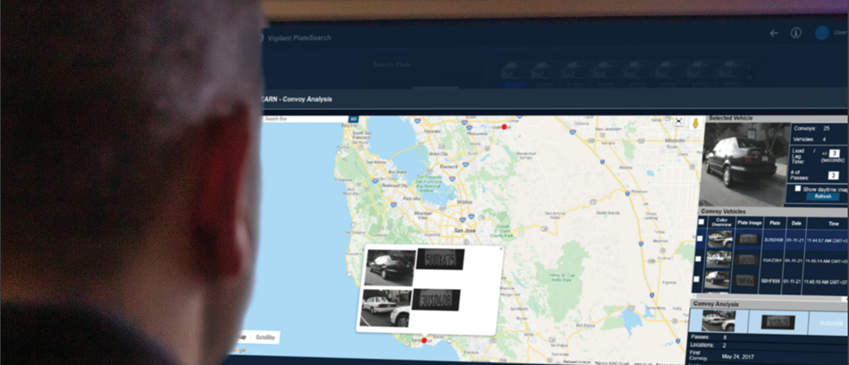Man
Professional
- Messages
- 3,223
- Reaction score
- 1,157
- Points
- 113
15 billion photos - the scale of covert surveillance in the United States.
In December 2023, a car with cameras drove down a small residential street in Alabama and took several pictures of everything on the side of the road. One of them has a poster in support of Trump, installed outside the garage, next to the flag of Israel, a Christmas wreath and an inflatable snowman. Another picture shows the sign of support "Steelworkers for Harris-Waltz", installed on the lawn near the house. The cameras also recorded stickers on cars for and against Biden, political slogans and inscriptions on T-shirts.
The images were taken using AI-based cameras that are installed on cars and were originally created to read license plates. However, the cameras also photograph political posters on private property, people with inscriptions on their clothes, stickers on cars and other details. According to WIRED, Motorola Solutions' DRN Data system allows you to search for images by keywords, phrases or names, even if they are not associated with car numbers.
License-plate recognition (LPR) cameras record everything that happens around, including location. Private detectives, insurance companies and property recovery services have access to such data. Motorola Solutions' separate Vigilant system allows law enforcement to use this information.

Vigilant System Interface Example
Artist Julia Weist, who has studied such databases, found that the system can find images for a variety of queries, such as "Trump," "believe," and even "lost." When you asked for "believe", the system showed posters on the lawns, inscriptions on street planters and even sweaters with this word.
Experts believe that such technologies make it possible to monitor people's personal information, including their political views. Jay Stanley of the American Civil Liberties Union said the trend confirms how widespread covert surveillance has become in ordinary American neighborhoods.
DRN said in a statement that the company is acting in accordance with the laws. The LPR system works like this: the camera captures the car, and the Optical Character Recognition (OCR) technology detects and highlights the characters on the license plate. DRN sells different types of cameras:
Over the years, DRN has collected more than 15 billion car photos across the U.S., and the database is growing by 250 million images every month. The data is transferred to the police, but the information collected by the police does not get back into the commercial database.
Systems such as DRN and its competitor Flock are increasingly being used to track people in cities and suburbs. But experts fear that such data could be used for political purposes, given the growing tensions and aggression in society.
Source
In December 2023, a car with cameras drove down a small residential street in Alabama and took several pictures of everything on the side of the road. One of them has a poster in support of Trump, installed outside the garage, next to the flag of Israel, a Christmas wreath and an inflatable snowman. Another picture shows the sign of support "Steelworkers for Harris-Waltz", installed on the lawn near the house. The cameras also recorded stickers on cars for and against Biden, political slogans and inscriptions on T-shirts.
The images were taken using AI-based cameras that are installed on cars and were originally created to read license plates. However, the cameras also photograph political posters on private property, people with inscriptions on their clothes, stickers on cars and other details. According to WIRED, Motorola Solutions' DRN Data system allows you to search for images by keywords, phrases or names, even if they are not associated with car numbers.
License-plate recognition (LPR) cameras record everything that happens around, including location. Private detectives, insurance companies and property recovery services have access to such data. Motorola Solutions' separate Vigilant system allows law enforcement to use this information.

Vigilant System Interface Example
Artist Julia Weist, who has studied such databases, found that the system can find images for a variety of queries, such as "Trump," "believe," and even "lost." When you asked for "believe", the system showed posters on the lawns, inscriptions on street planters and even sweaters with this word.
Experts believe that such technologies make it possible to monitor people's personal information, including their political views. Jay Stanley of the American Civil Liberties Union said the trend confirms how widespread covert surveillance has become in ordinary American neighborhoods.
DRN said in a statement that the company is acting in accordance with the laws. The LPR system works like this: the camera captures the car, and the Optical Character Recognition (OCR) technology detects and highlights the characters on the license plate. DRN sells different types of cameras:
- Stationary for installation along roads, which determine the make and model of the car;
- Cameras for installation on buildings;
- Mobile cameras that can be mounted on the car and film around while driving.
Over the years, DRN has collected more than 15 billion car photos across the U.S., and the database is growing by 250 million images every month. The data is transferred to the police, but the information collected by the police does not get back into the commercial database.
Systems such as DRN and its competitor Flock are increasingly being used to track people in cities and suburbs. But experts fear that such data could be used for political purposes, given the growing tensions and aggression in society.
Source
